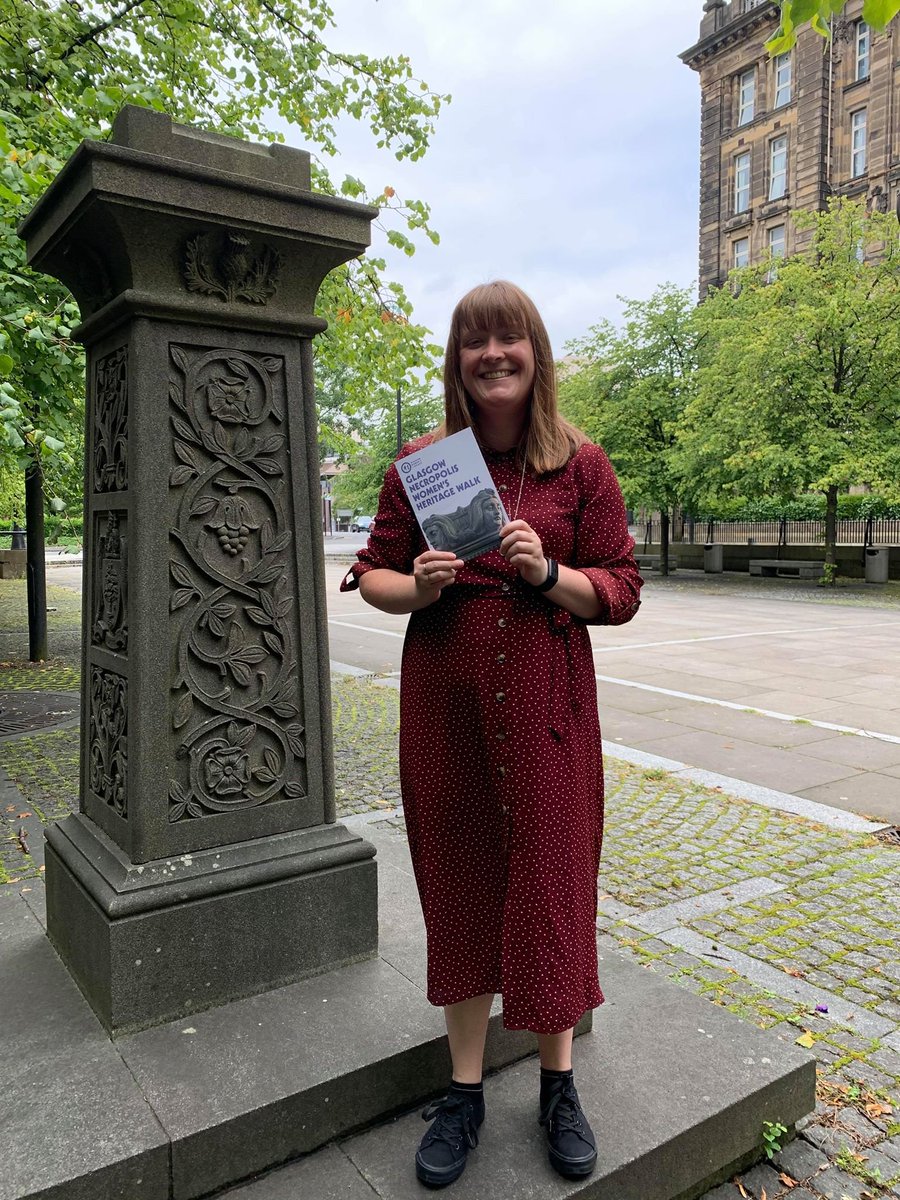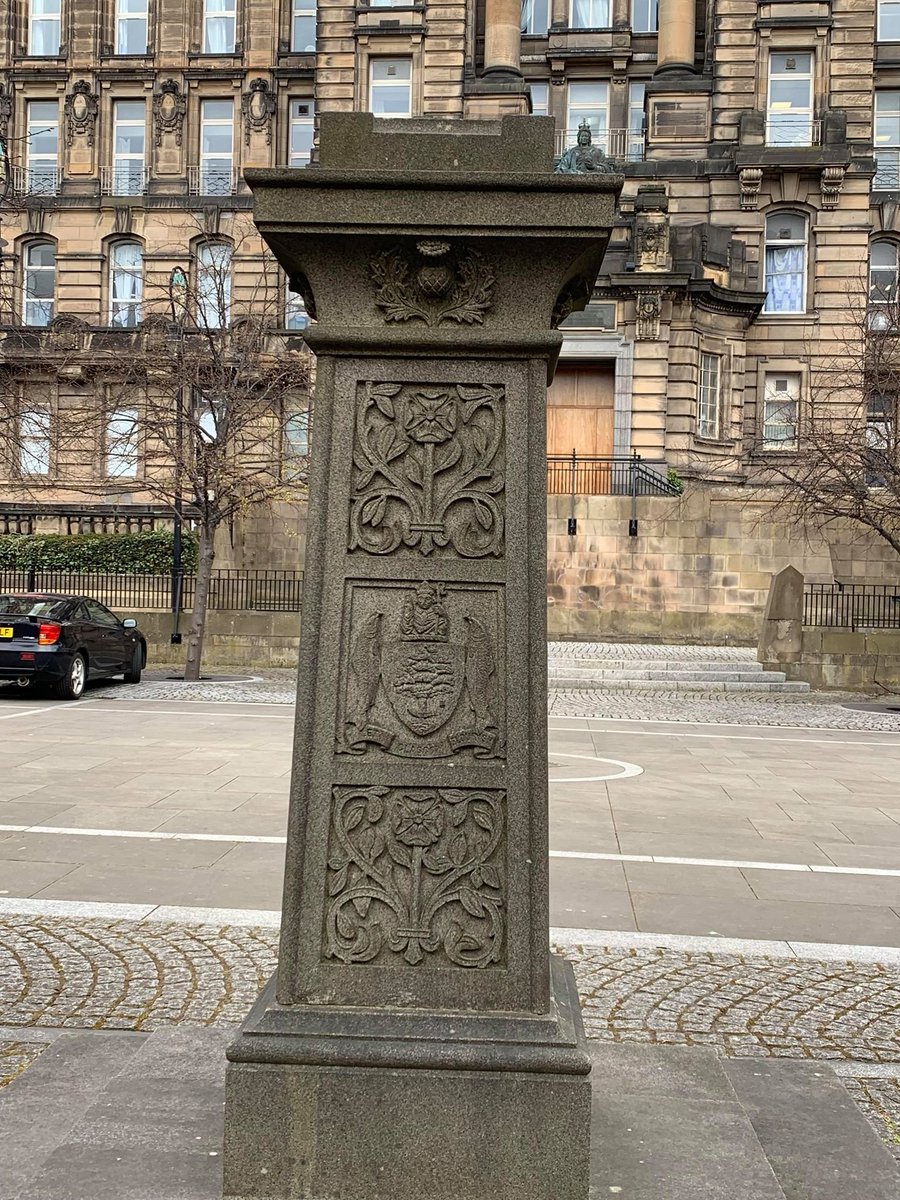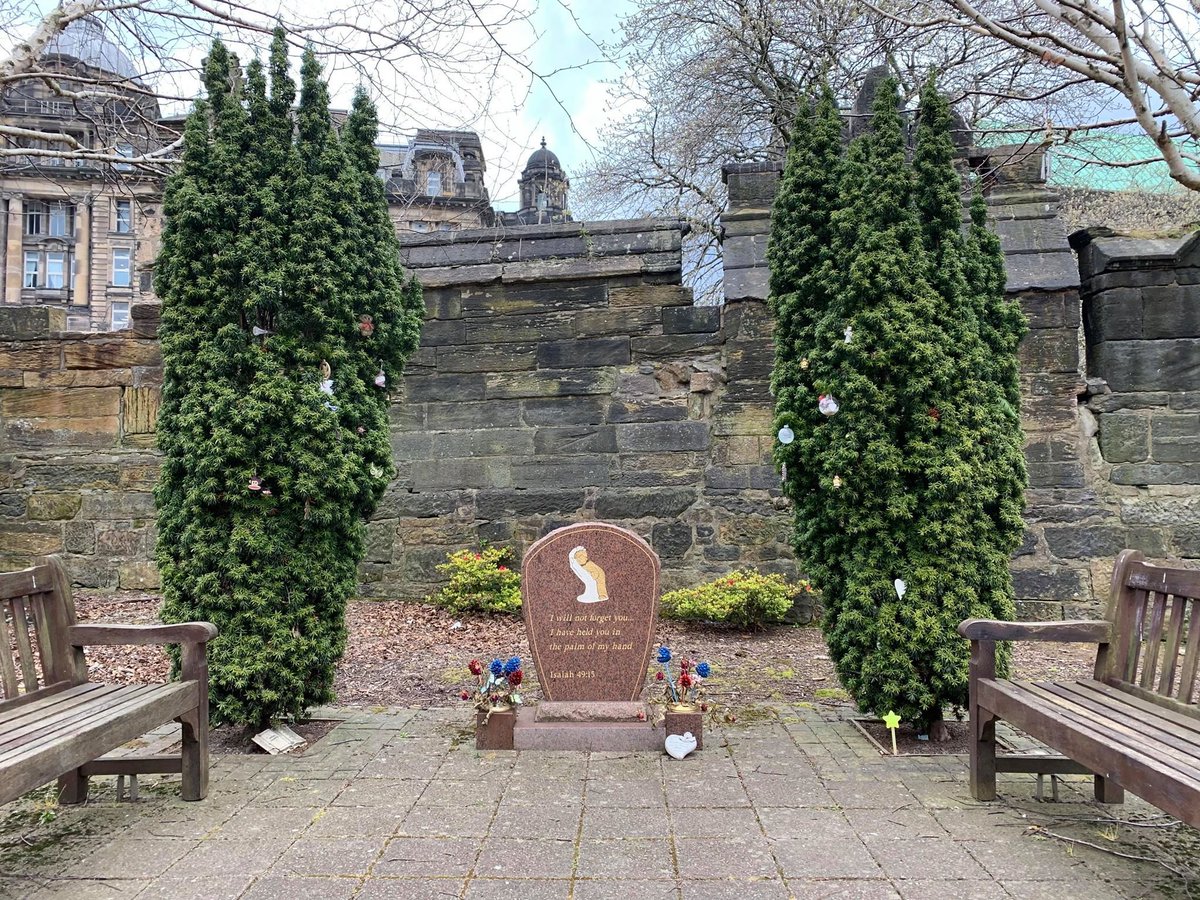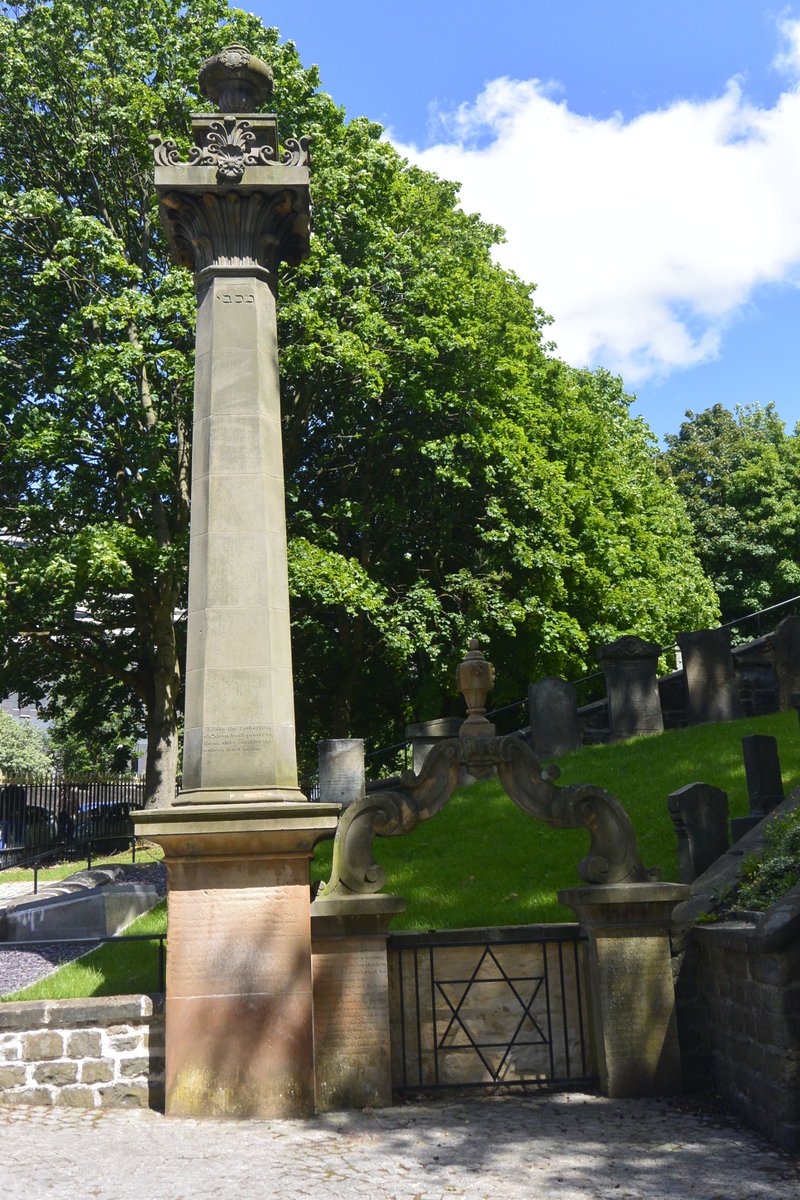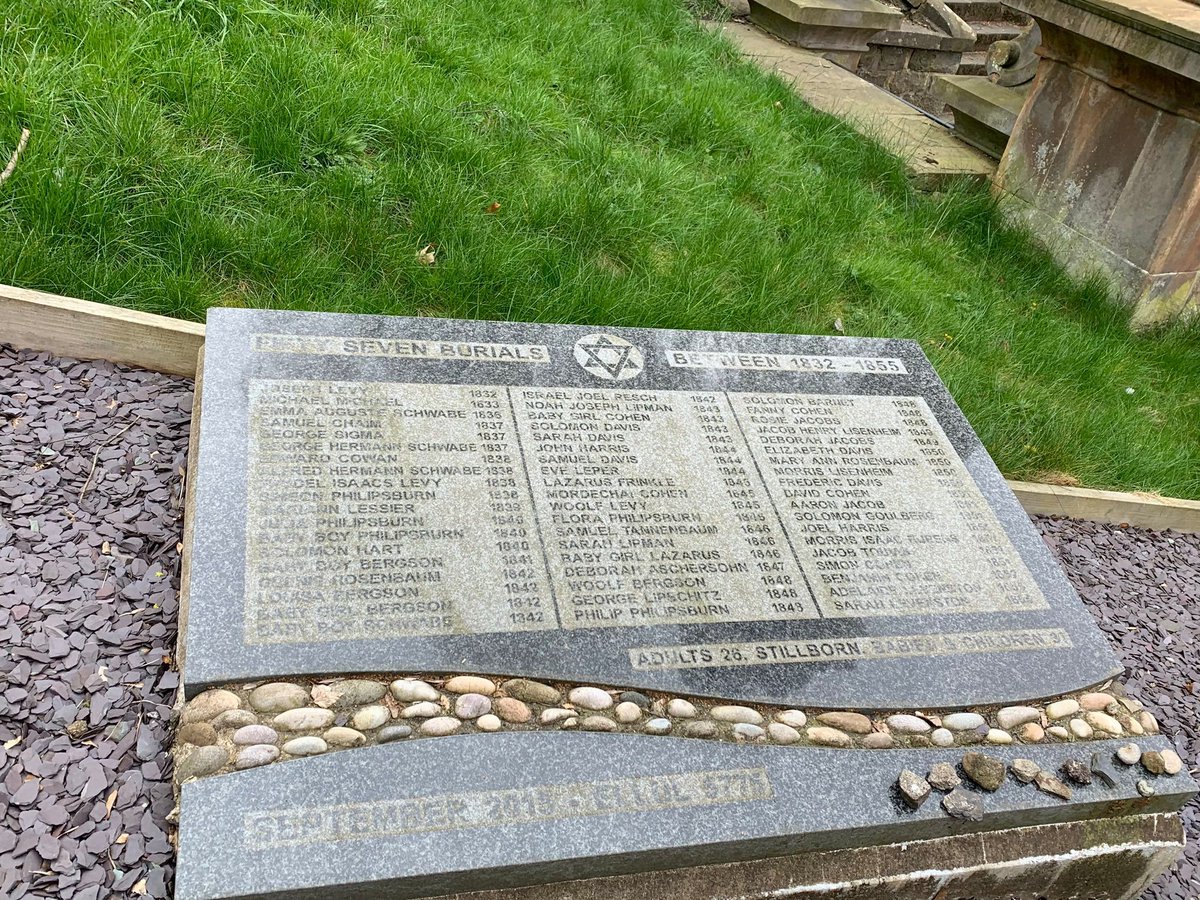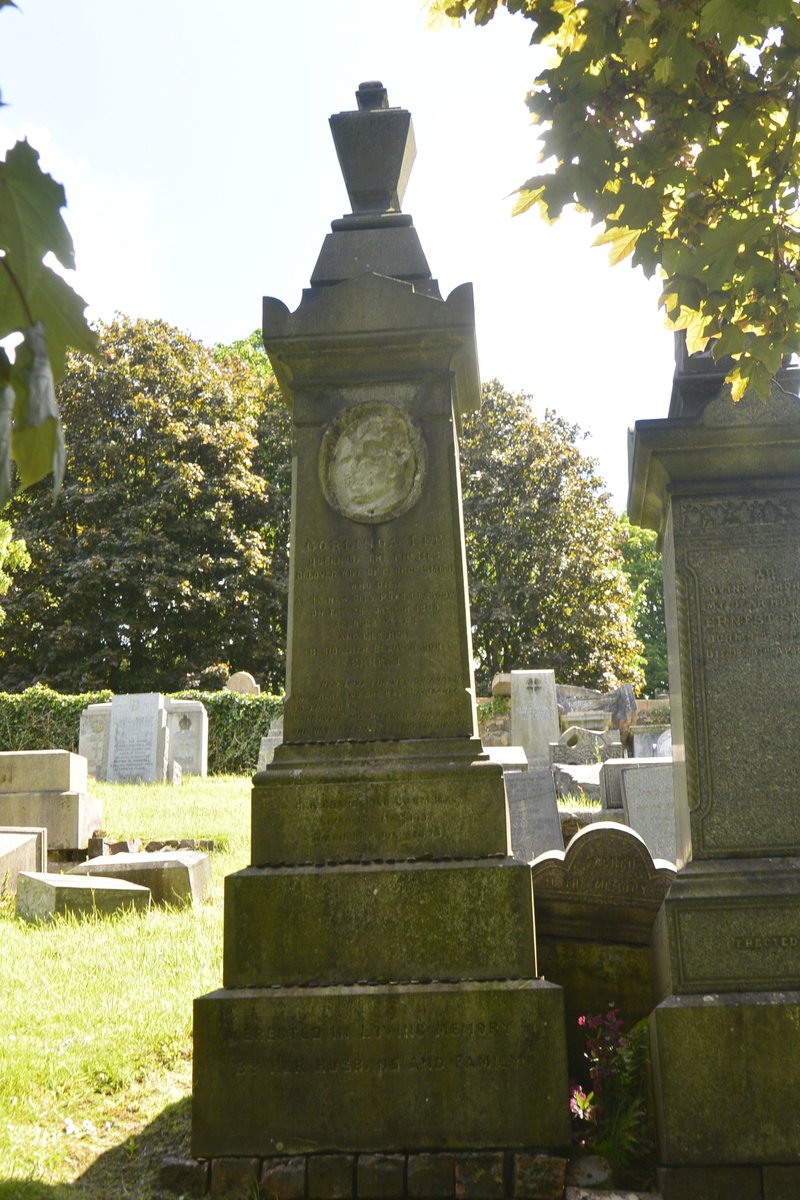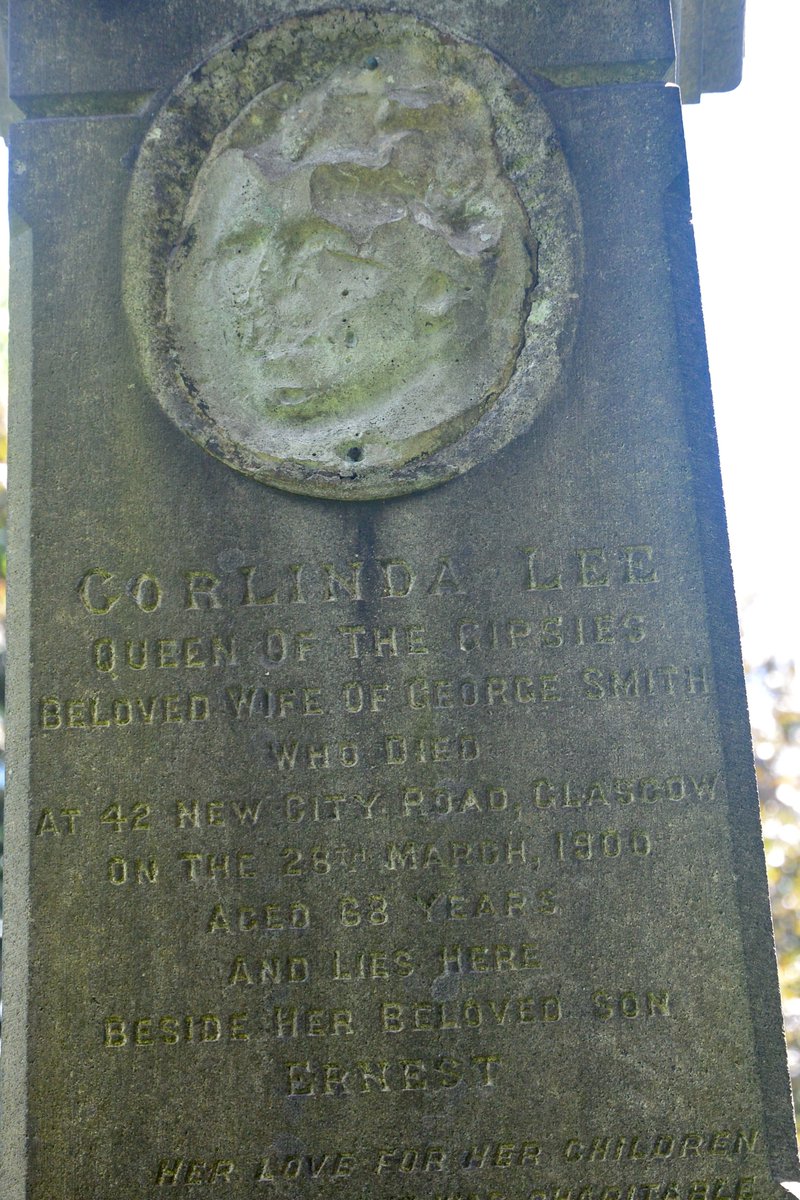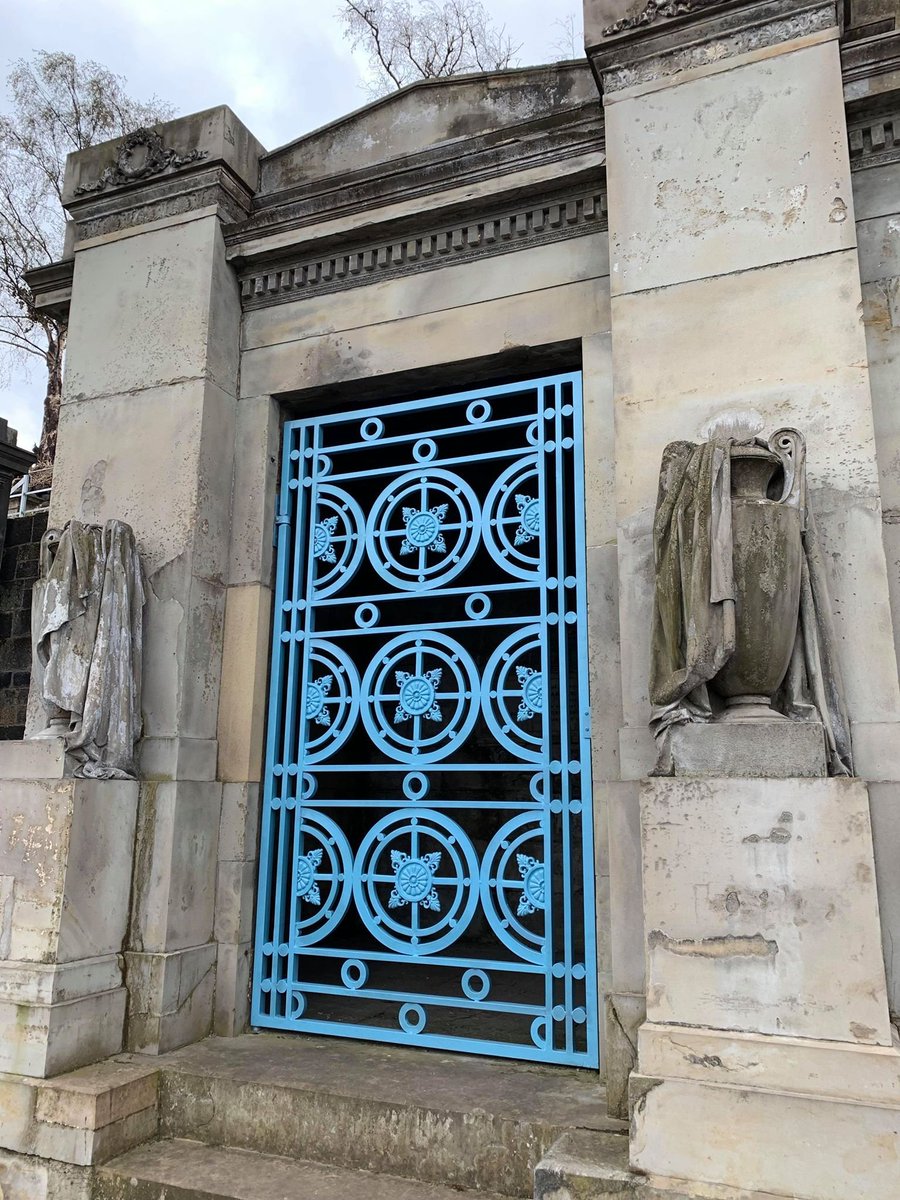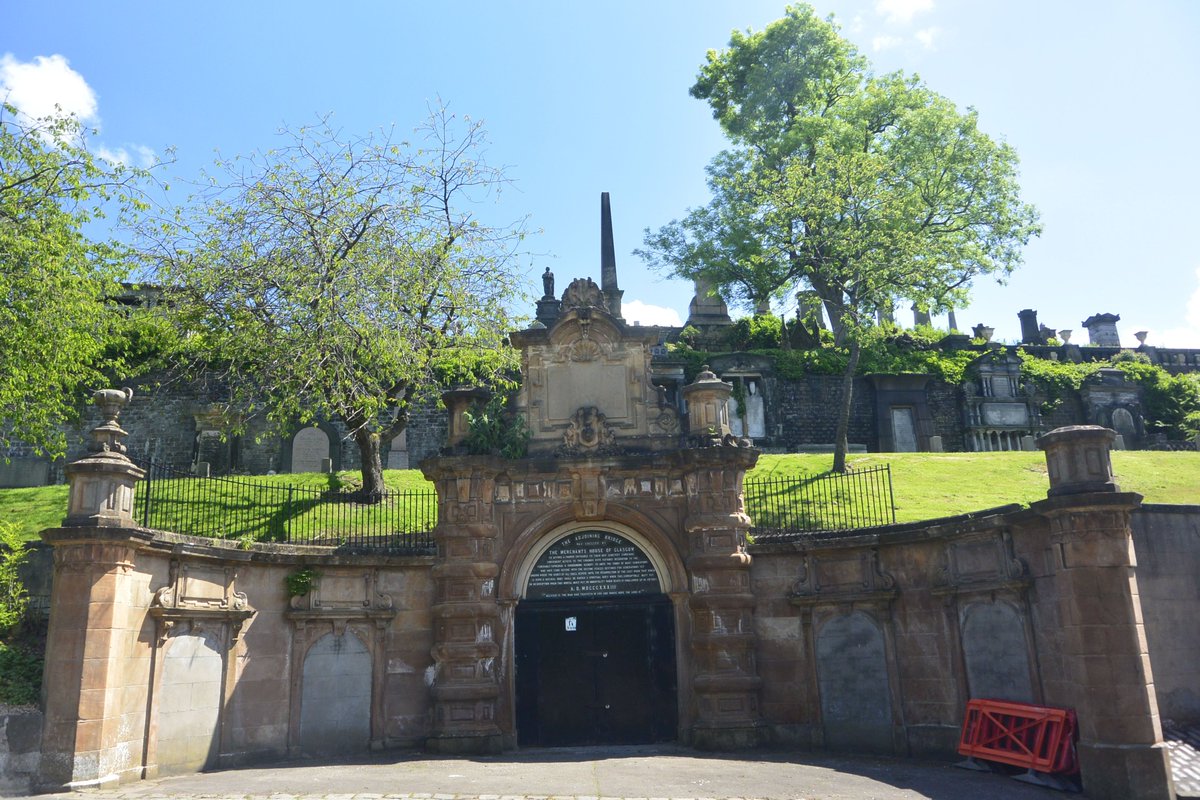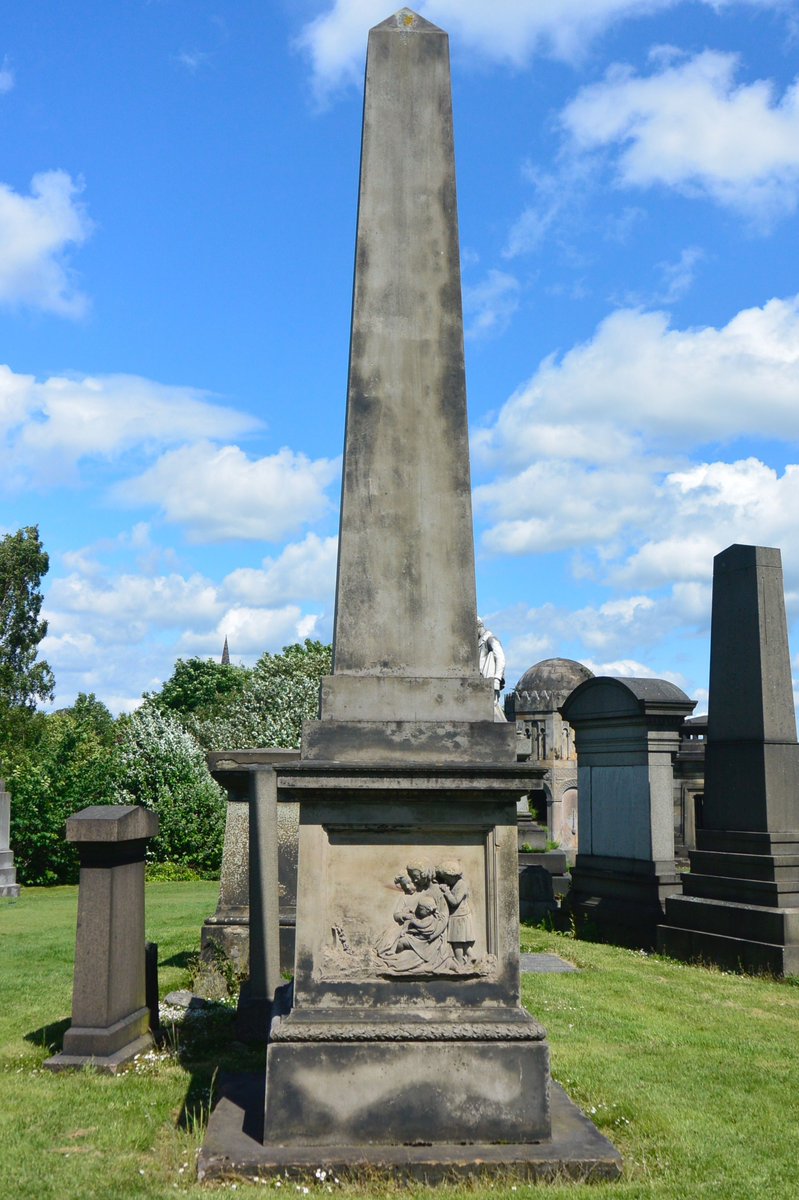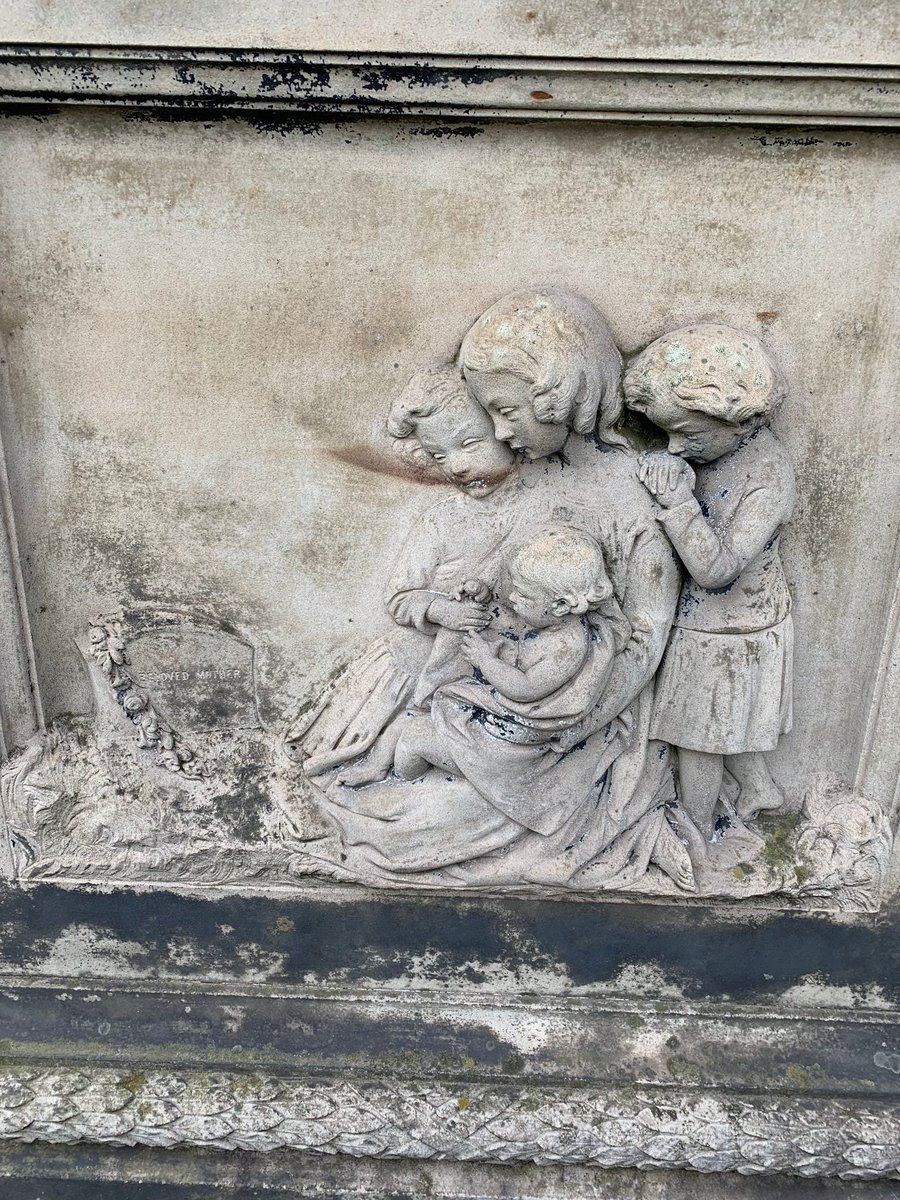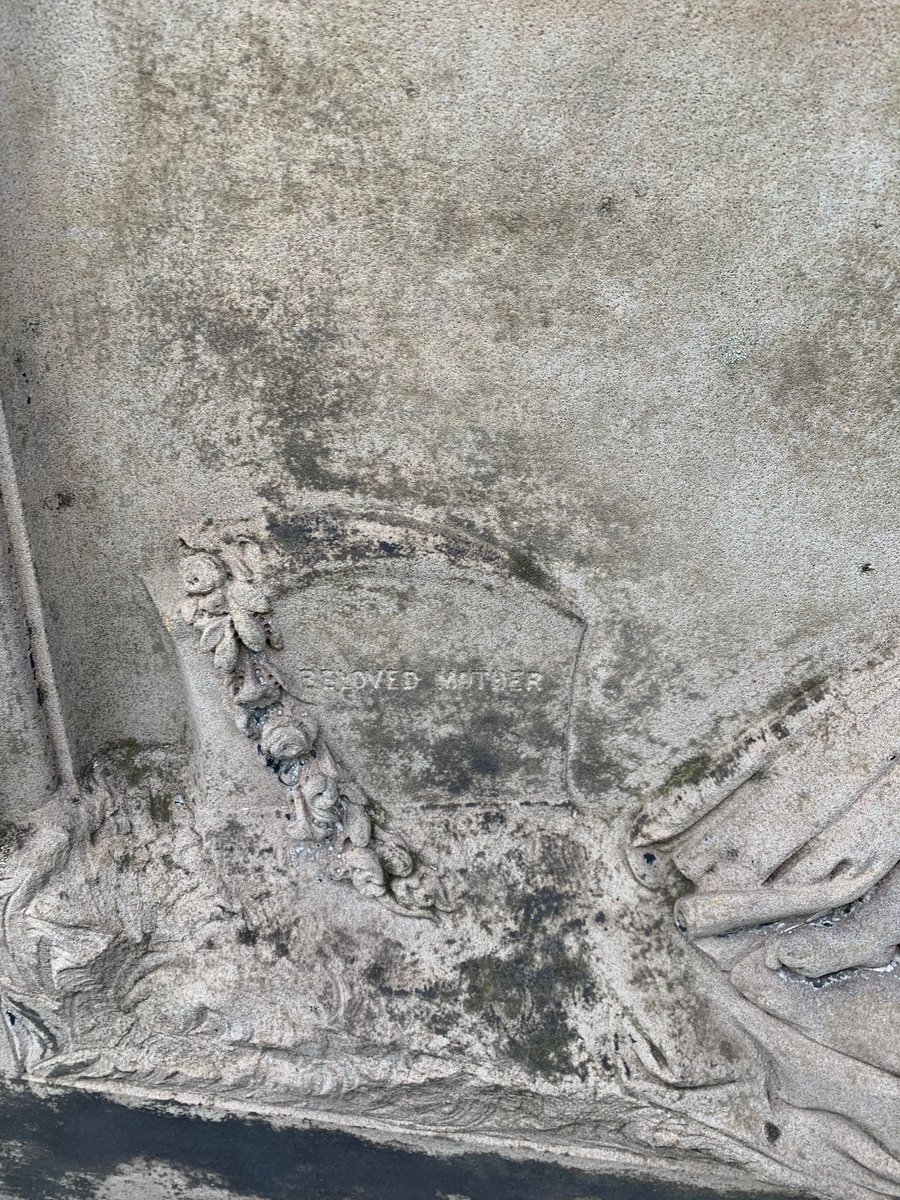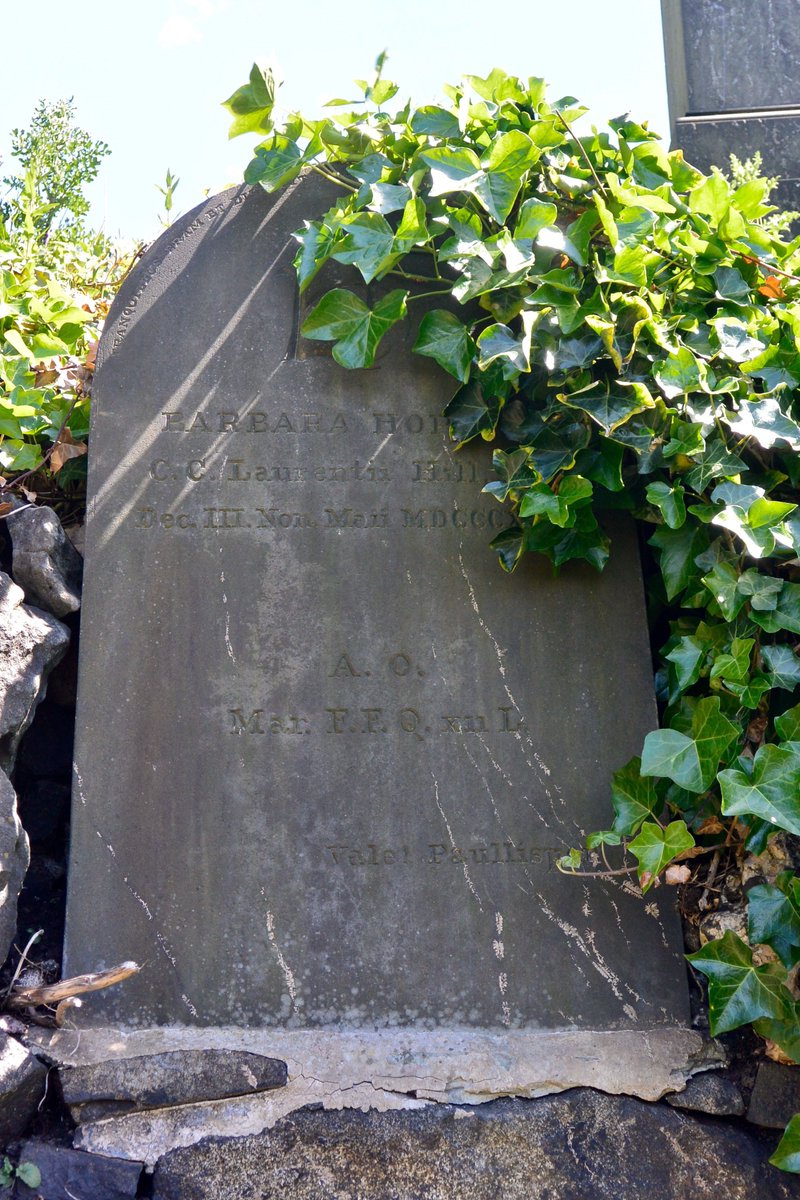Hi, I’m @LouBell, one of GWL’s Women’s History tour guides. We can’t take you on any walks at the moment, so I’ve created a virtual Glasgow Necropolis tour for you!
This tour is particularly special to me as it& #39;s the first one I went on as a member of the public, and is how i& #39;ve ended up becoming involved with guiding on them! All thanks to me tweeting about it afterwards, and cheekily asking if GWL needed more guides...
To begin with, let& #39;s have a look at this monument. This marks the spot where the medieval Bishop& #39;s Palace once stood. Later, in the post-reformation period, it is where women accused of witchcraft were imprisoned and often put to death.
A particularly vicious time was during the reign of James VI (1566-1625) - he led a hate campaign against women alleged to be witches.
Moving to the entrance of the Necropolis is this memorial to stillborn babies. The campaign for it was launched in 1998 by Glasgow City Councillor Elaine Smith, the Drumchapel Child Bereavement Support Group & the Stillborn & Neonatal Death Association. It was unveiled in 1999.
The Necropolis opened in 1833. There are around 50,000 people buried here, with 3500 visible tombs. The 1st Christian burial was of a woman: Elizabeth Miles - stepmother to George Mylne, Superintendent of the Necropolis.
Let& #39;s head in & find out about some of the other women!
Let& #39;s head in & find out about some of the other women!
A small tract of land here comprises the Jewish cemetery. Outside the walls of it are 2 headstones: one belonging to Deborah Ascherson, who died in 1847. She was "in dispute" with the leaders of the Jewish community in Glasgow. But the precise reason for her exclusion is unknown.
Next up we have the memorial to "Queen of the Gypsies" Corlinda Lee! Corlinda was part of a prominent gypsy family, and married George "Lazzy" Smith - essentially merging two great dynasties - and together they were known as "King and Queen of the Gypsies."
An interesting story involving another woman from history is as follows: whilst holding a ball in Dunbar in 1878, Queen Victoria & her entourage paid a visit to the touring family and had her fortune read by Corlinda - thus securing her popularity amongst the well-to-do.
Corlinda died on 28th March 1900, aged 68, in a house in Garnethill. Her gravestone reads:
Her love for her children was great and she was charitable to the poor.
Wherever she pitched her tent she was loved and respected by all.
Her love for her children was great and she was charitable to the poor.
Wherever she pitched her tent she was loved and respected by all.
(You have to walk up a fair amount of steps to get to the next stop, but the views of the Cathedral as you get that bit higher are well worth it!)
This Greek Doric temple was the 1st mausoleum in the Necropolis. Robert Black originally commissioned it after the death of his daughter Catherine, in 1837, aged just 12. Tragically, he lost 4 other daughters before they were 21.
You& #39;re spoilt for mausoleums here, and the next one is for the three Buchanan sisters of Bellfield. Margaret, Jane and Elizabeth lived into their 70s; outlived their three brothers; and never married. This mausoleum is also the only one here to have been pre-paid for!
In 1861, these wealthy and caring sisters drew up a joint will. In this they made numerous generous bequests to charitable organisations around Glasgow.
Walking further round the Necropolis, you get a great view over the East End, as well as Tinto Hill (on a clear day). Amongst the many landmarks are Glasgow Green and Templeton& #39;s Carpet Factory - both of which you can find out about on our East End Walk! https://womenslibrary.org.uk/discover-our-projects/women-make-history/east-end-womens-heritage-walk/">https://womenslibrary.org.uk/discover-...
Our next stop is the tomb of the wonderful Isabella Elder (buried here in 1905). She was a Glasgow philanthropist who took a particular interest in higher education, particularly for women, and in the people of Govan (Elder Park & Elder Free Library were created thanks to her)
In 1883, she bought North Park House & gave it to Queen Margaret College (the 1st in Scotland to offer higher education to women). She also funded its medical school in 1890, although women weren& #39;t allowed to graduate until 1892. At this point, QMC merged with Glasgow Uni.
And in 1894, produced Scotland& #39;s 1st female graduates in Medicine. However, women were still being taught separately and this went against Isabella& #39;s stipulations for handing over North Park House to the Uni. So she refused to give them more money (in 1899) unless this changed.
I mentioned earlier that there are 50,000 burials in the Necropolis - most of which are actually unmarked graves! There are many reasons for this, but I just wanted to mention it here to acknowledge and remember all these forgotten people, many of them women.
This also links into our next stop (and one of my favourites!) At the bottom of this tall obelisk there are four small children looking at a headstone with "Beloved Mother" inscribed. There is no family name on the stone. So who does it commemorate?
This mother& #39;s identity was unknown until 2007, when researcher Diana Burns discovered who she was. Looking for clues in the position of the sculpture, the sculptor, & in burial records, she concluded that this is almost certainly the grave of Agnes Strang, who died in childbirth.
Two more stops to go! Our penultimate is the grave of Lillias Scott. Born in Glasgow in 1804, she died on the 18th of June 1850, when the ship she was on (the Orion), returning from Canada, struck rocks 150 yards off Portpatrick and sank. Her husband & their daughter also died.
Our last stop is this monument to Laurence Hill (one of the founders of the Necropolis) and his second wife. His first wife, Barbara Hopkirk, is to the right. Barbara led a life of constant pregnancy and died at the age of only 40, in 1833, having given birth to 13 children.
With memorials like these often faded, walks like this are important to keep women& #39;s history alive when much of the physical evidence has disappeared. To find out more, head to GWL& #39;s #WomenMakeHistory page to download maps for our walks, trails & bike ride https://womenslibrary.org.uk/discover-our-projects/women-make-history/">https://womenslibrary.org.uk/discover-...
Finally, thank you for joining me today! We& #39;d love to hear about the women you come across on your walks: place names, street art, memorials, etc. Tag @womenslibrary and #WomenMakeHistory To see some of the wonderful responses we& #39;ve had so far, click here: https://womenslibrary.org.uk/2020/07/03/60692/">https://womenslibrary.org.uk/2020/07/0...

 Read on Twitter
Read on Twitter